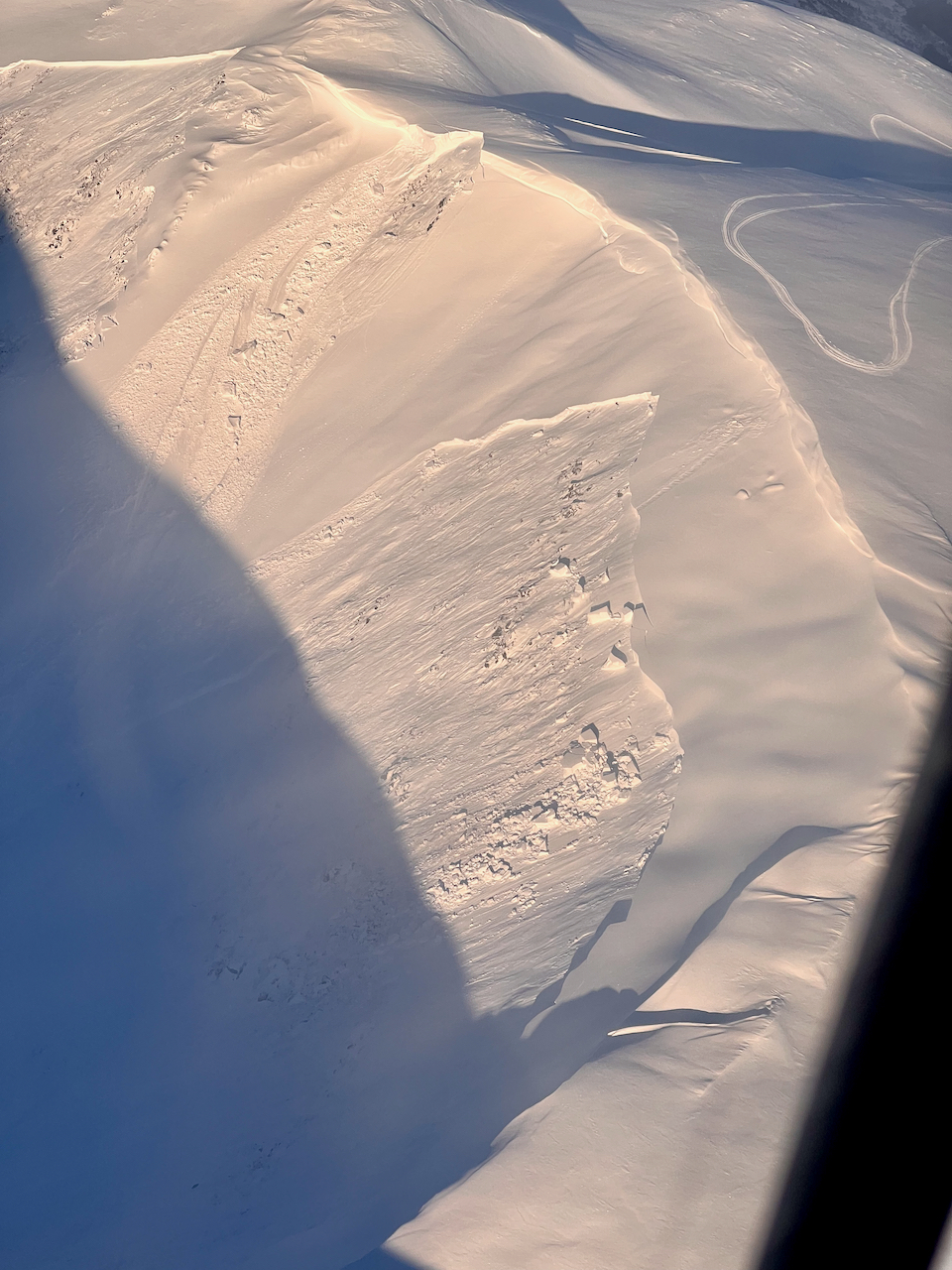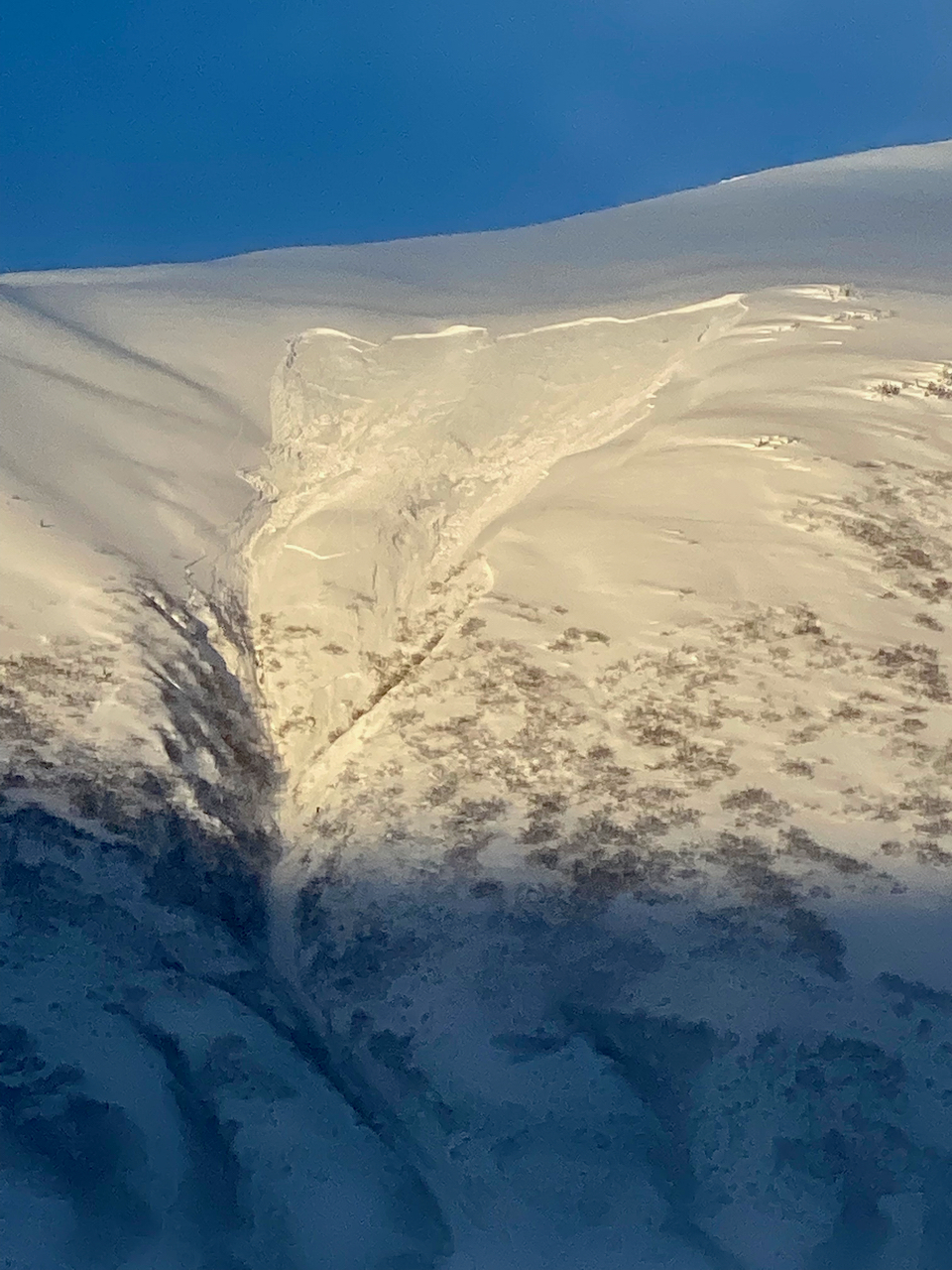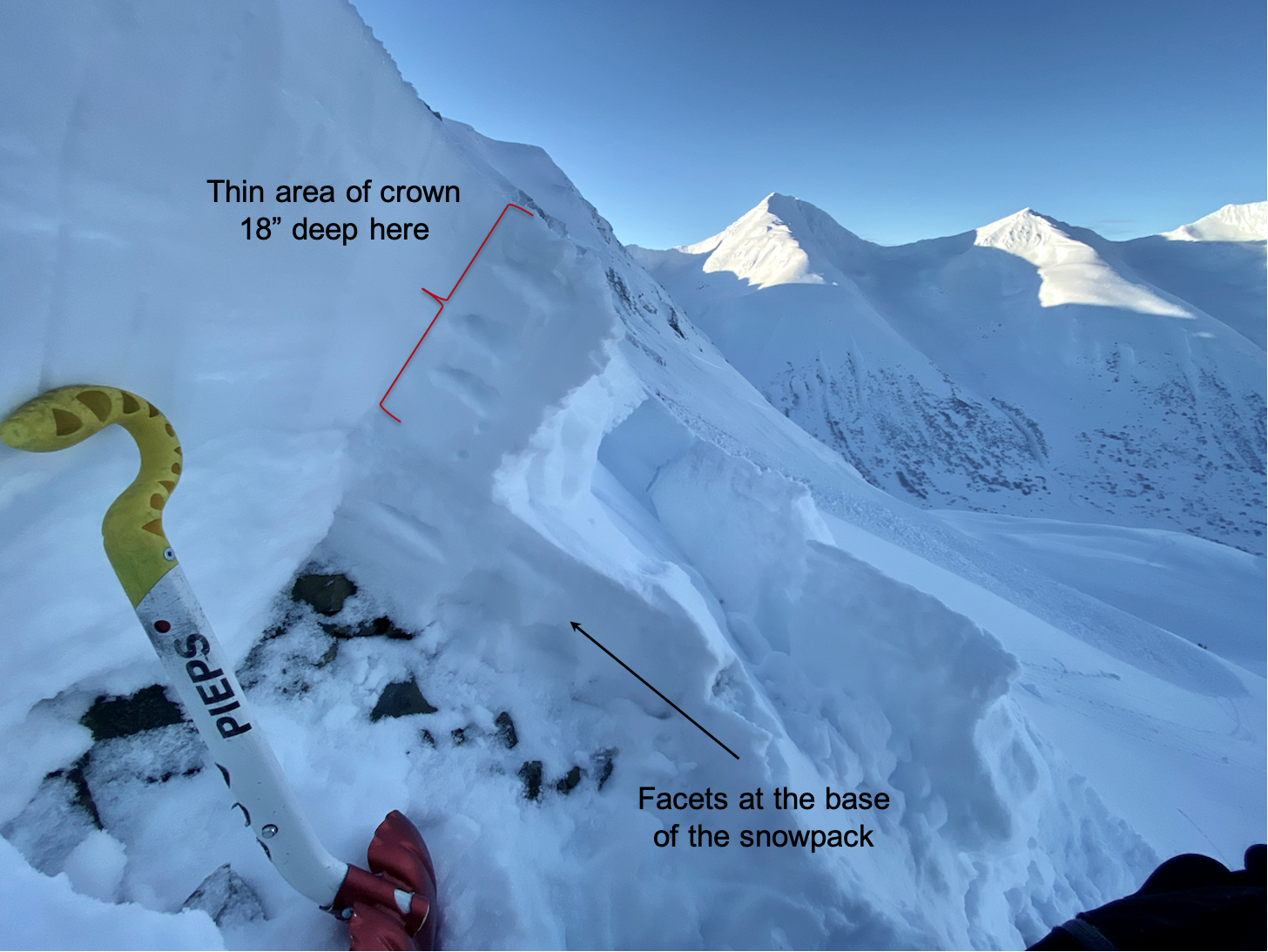A LOT of avalanche activity occurred yesterday on the southern end of Seattle Ridge. Some of these avalanches were very large with crowns up to 10′ deep in wind loaded areas. No one was caught in any that we know of. The weak layer in most appeared to be weak faceted snow near the base of the snowpack.
Backside of Seattle Ridge (Triangle Bowl/-3 Bowl): A group of two snowmachiners remotely triggered a large slab avalanche on a northerly facing slope from ~100′ away (photo below). No one was caught. This avalanche likely sympathetically triggered at least two more avalanches lower and across the bowl. Additionally, these riders remotely triggered at least two very large slabs in the bowl to the south when on the ridge (also pictured below). Report from group HERE and our report HERE.
Backside of Seattle Ridge (Widowmaker Slide Path): A relatively smaller slab was triggered by a person yesterday afternoon. Unknown what mode of travel or any other details at this time.
Front side of Seattle Ridge: Several slabs pulled out in the steep gullies just across the motorized parking lot. We are unsure if they were triggered by riders along the ridge or natural from the very end of the strong winds the afternoon before (on 1/4/23). Let us know if you saw these on Wed, Jan 4th.
Summit Lake area: Many large natural avalanches that released Wed, Jan 4th, during the strong winds were seen yesterday. See the photos HERE.
 Large slab remotely triggered by 2 riders in Triangle/-3 Bowl yesterday morning. 1.5.23.
Large slab remotely triggered by 2 riders in Triangle/-3 Bowl yesterday morning. 1.5.23.
 Looking up into Triangle/-3 Bowl at the remotely triggered slab on the right and sympathetically triggered slab on the left (SW aspect), a much larger slab also released out of view to the left of the photo . Photo by riders involved, 1.5.23.
Looking up into Triangle/-3 Bowl at the remotely triggered slab on the right and sympathetically triggered slab on the left (SW aspect), a much larger slab also released out of view to the left of the photo . Photo by riders involved, 1.5.23.
 Large slabs remotely triggered by the riders along the ridge. This is the bowl directly south of Triangle/-3 Bowl. Photo by Jon Davis, 1.5.23.
Large slabs remotely triggered by the riders along the ridge. This is the bowl directly south of Triangle/-3 Bowl. Photo by Jon Davis, 1.5.23.
 Slab that was triggered yesterday afternoon on the Widowmaker slide path. 1.5.23.
Slab that was triggered yesterday afternoon on the Widowmaker slide path. 1.5.23.
 Five slabs on the front side of Seattle Ridge. Unknown trigger. 1.5.23.
Five slabs on the front side of Seattle Ridge. Unknown trigger. 1.5.23.
 Close up on the slab on the front side of Seattle that is furthest to the left in above photo. 1.5.23.
Close up on the slab on the front side of Seattle that is furthest to the left in above photo. 1.5.23.

 Large slab remotely triggered by 2 riders in Triangle/-3 Bowl yesterday morning. 1.5.23.
Large slab remotely triggered by 2 riders in Triangle/-3 Bowl yesterday morning. 1.5.23. Looking up into Triangle/-3 Bowl at the remotely triggered slab on the right and sympathetically triggered slab on the left (SW aspect), a much larger slab also released out of view to the left of the photo . Photo by riders involved, 1.5.23.
Looking up into Triangle/-3 Bowl at the remotely triggered slab on the right and sympathetically triggered slab on the left (SW aspect), a much larger slab also released out of view to the left of the photo . Photo by riders involved, 1.5.23. Large slabs remotely triggered by the riders along the ridge. This is the bowl directly south of Triangle/-3 Bowl. Photo by Jon Davis, 1.5.23.
Large slabs remotely triggered by the riders along the ridge. This is the bowl directly south of Triangle/-3 Bowl. Photo by Jon Davis, 1.5.23. Slab that was triggered yesterday afternoon on the Widowmaker slide path. 1.5.23.
Slab that was triggered yesterday afternoon on the Widowmaker slide path. 1.5.23.  Five slabs on the front side of Seattle Ridge. Unknown trigger. 1.5.23.
Five slabs on the front side of Seattle Ridge. Unknown trigger. 1.5.23. Close up on the slab on the front side of Seattle that is furthest to the left in above photo. 1.5.23.
Close up on the slab on the front side of Seattle that is furthest to the left in above photo. 1.5.23.  A look at the crown of the Triangle/-3 Bowl avalanche on a northerly aspect at 3,000′. This area was the safest to access and was in a very shallow section of the snowpack. 1.5.23.
A look at the crown of the Triangle/-3 Bowl avalanche on a northerly aspect at 3,000′. This area was the safest to access and was in a very shallow section of the snowpack. 1.5.23.